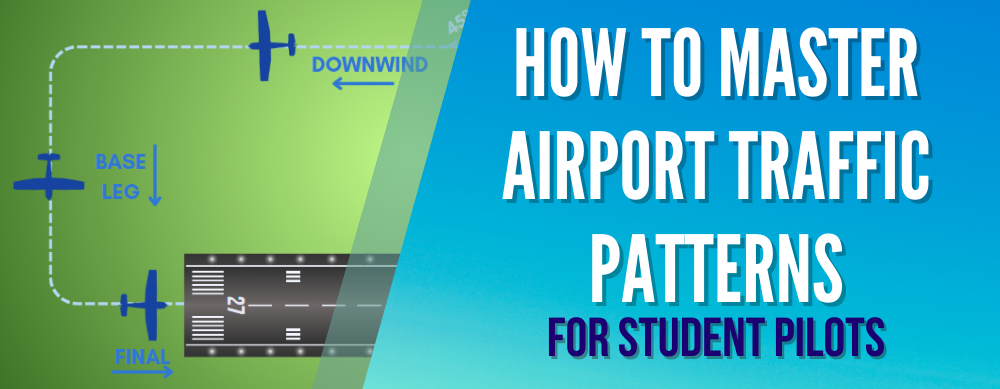Perhaps this sounds familiar: you are at your local airport running your preflight and you notice that although the weather at your destination is excellent, and conditions enroute are also good, some low clouds are lingering nearby.
Everything is clear in your direction of travel, but the rotating beacon is on. Due to the clouds, the airport is now operating under Instrument Flight Rules (IFR), and you were planning for a Visual Flight Rules (VFR) trip.
Now what? Do you have any options other than waiting it out or filing an IFR flight plan (assuming you have earned your instrument rating)?
Did you know you may be able to get underway without a delay simply by requesting and receiving a Special VFR clearance?
What is a Special VFR clearance?
Normally, if a pilot is flying under visual flight rules, the pilot must continue to abide by the VFR minimums and rules throughout the duration of the flight. When making an approach to landing, if conditions are such that the airport is designated instrument flight rules only, in theory the VFR pilot must divert to an alternate location that is accepting VFR traffic.
The same applies to taking off. If conditions at the originating airport do not meet VFR minimums of 3 statute miles (SM) visibility or 1,000’ cloud separation, as a rule VFR pilots will be unable to takeoff since the airport is under IFR.
Exceptions can be made, however, under the right circumstances, and this is where Special VFR (SVFR) clearances come into play. A SVFR clearance is an authorization that VFR pilots can request, and which may be issued at air traffic control (ATC)’s discretion. The clearance allows a VFR pilot to takeoff or land from an IFR airport under Special Visual Flight Rules providing they meet the Special VFR clearance restrictions.
Most of the time if an airfield is operating under IFR, it makes sense for VFR pilots to divert if they are in the air or remain on the ground if they are waiting to take off. A SVFR clearance does not allow you to enter clouds.
The scenarios where requesting a SVFR clearance makes sense are when you have excellent weather surrounding or near the airport in your direction of travel. If it is just the immediate area which is below minimums, and you are still safely able to navigate visually until you land or until you reach the surrounding VFR airspace on takeoff, a SVFR clearance might make sense.
What airspace are Special VFR clearances used in?
The FAA allows special VFR clearance to be issued for terminal areas in Class B, Class C, Class D, and Class E airspace, although some Class B and Class C airports do not issue them. Be aware of which controlled airspace you plan to fly through on course to your intended place of landing.
FAR Part 91.151, Part 91 Appendix D Section 3 contains a list of airports which do not authorize SVFR clearances. Aeronautical publications for these airports will also indicate “NO SVFR.”
Requirements for VFR aircraft
The requirements aircraft must meet to be eligible to receive a SVFR clearance are detailed under FAR Part 91.157, and depend on whether you are flying fixed wing or rotary wing as well as whether it is day or night.
Fixed wing aircraft flying during the day must meet the following requirements:
- Be operating under Part 91
- Receive ATC clearance before entering the designated IFR airspace
- Remain clear of clouds
- Have at least 1 statute mile (SM) of ground visibility reported at the airport the pilot is requesting to land or depart from or 1 statute mile (SM) of flight visibility at an airport with no weather reporting capability
Between sunset and sunrise, fixed wing aircraft must meet day requirements along with the following additional requirements:
- Pilot must be instrument rated
- Aircraft must be equipped for IFR night flight per FAR Part 91.205(d)
Rotary wing pilots must meet fewer requirements than their fixed wing counterparts in order to qualify for a SVFR clearance. Rotary pilots do not need to be IFR certified to request night SVFR clearance, and they are also not constrained by the 1 statute mile visibility requirements. Rotary pilots must simply:
- Receive ATC clearance before entering the designated IFR airspace
- Remain clear of clouds
Restrictions on Special VFR clearances
Provided you meet the requirements to be eligible for a special VFR clearance and that clearance is granted, you should still expect to be subject to certain restrictions. IFR traffic takes priority over VFR and SVFR traffic. This means your request may be delayed, denied, or subject to specific instructions to keep you out of the way of IFR traffic.
Your SVFR clearance exempts you from meeting normal VFR cloud layer clearance minimums, however you must still remain clear of the cloud layer. Remember that one of the requirements for obtaining a special VFR clearance is having at least 1 statute mile of ground visibility.
Ground visibility at the time of request is determined by the commissioned automated weather station at the airport you are requesting SVFR for if that airport has a weather station. If it does not, the controller will ask the pilot to confirm that they have at least 1 statute mile of flight visibility.
If visibility drops below 1 mile after the clearance has been issued, the flight no longer meets SVFR qualifications. The pilot has three choices at this point. They can request an IFR clearance if they are IFR certified and the aircraft is properly equipped for IFR flight.
If conditions permit, they can exit the airspace and return to a VFR or SVFR area. If neither of the first two options are feasible, the pilot must declare an emergency.
How to request Special VFR clearance
As a pilot, it is your responsibility to request SVFR clearance under conditions when it makes sense to do so. Know the restrictions and requirements, and only ask Air Traffic Control for SVFR clearance if you, your aircraft, and the current conditions meet the parameters.
Per FAA policy, the request for SVFR clearance must come from the pilot and cannot be initiated or suggested by the controller, although you may hear a controller subtly prompt by asking you what your intentions are or advising you that an ATC clearance is required to enter or depart a designated surface area.
Watch FLY8MA’s Special VFR footage for a real-world example of how to request a special VFR clearance. Notice that the pilot simply requests a “special into Merrill [the destination airport].” Since the controller is juggling multiple aircraft, he does not hear the initial request.
He advises the pilot that her destination is “in IFR conditions.” Since he knows she is most likely calling to request special clearance, but he cannot suggest it, after advising the pilot of IFR conditions, the controller adds, “say intentions.” The pilot then requests and receives special VFR clearance into her destination.
Clearance requests must be made and approval received prior to entering the area. Make your clearance request to the tower at a towered airport or Approach, Center, or the closest FSS if the airport you are seeking clearance for has no currently operational tower.
While a Special VFR clearance does not require you to file a flight plan, the controller will need to know enough information about your flight that they can fit you in around IFR traffic.
When you request your Special Visual Flight Rules clearance, remember that SVFR traffic is prioritized behind IFR traffic. If you qualify for a clearance, but there is too much IFR traffic in the area, you may be denied or advised to expect a delay before your clearance is granted. The FAA does not allow for SVFR aircraft to cause a delay to arriving or departing IFR traffic.

Takeaways
When conditions over an airport dip just below the VFR minimums, but you have clear weather in your direction of travel, a Special VFR clearance can mean the difference between sitting on the tarmac and getting on your way.
This type of clearance can also allow you to land on a clear runway even if the opposite end is socked in and the airfield is operating under IFR.
If your local airfield is in a location prone to low cloud cover, and the field often reverts to IFR only, it may be time to take the plunge and earn your instrument rating. This would allow you the option of opening an IFR flight plan rather than needing to ask for SVFR clearance.
Already instrument rated but need to polish your skills prior to scheduling your next proficiency check? Break open a copy of Instrument Flight Review for a thorough refresher of everything you need to know to fly IFR.
Remember: The control tower providing a Special VFR clearance is not sanctioned permission to go scud running. Check your local weather report and follow VFR weather minimums and only request SVFR when it is safe to do so. Use Special VFR clearances as a tool to get you flying toward better weather, not as a workaround for flying in marginal conditions.
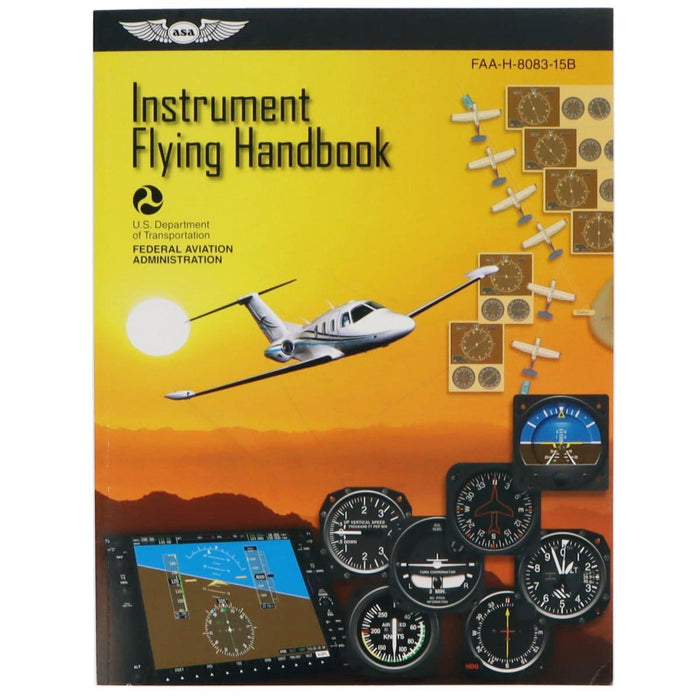
|
ASA Instrument Flying HandbookInterested in your instrument rating?This latest revision of the FAA's Instrument Flying Handbook expands upon the already impressive wealth of information contained in the previous version of this authoritative publication. New to this edition is a vast collection of material that addresses the latest in glass cockpit technology. |



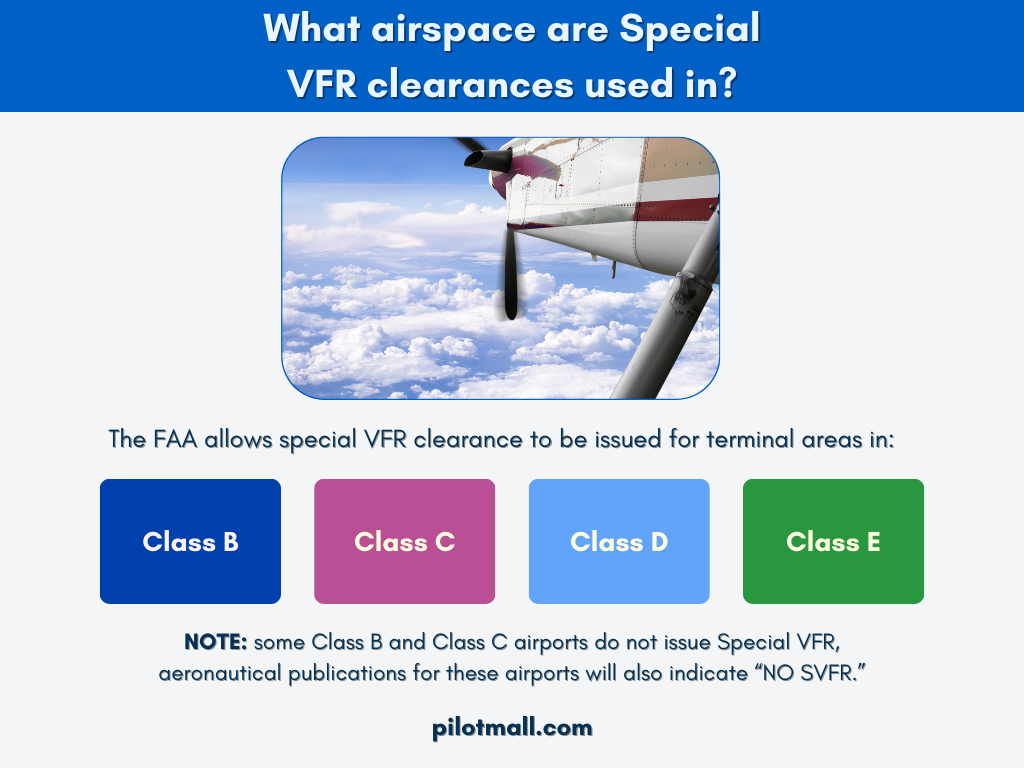





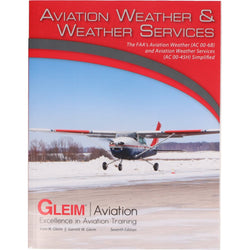
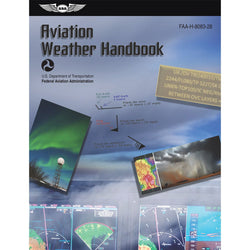
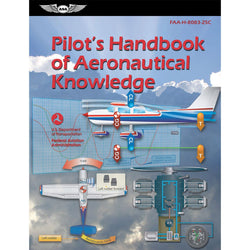
![The 6 Best Flight Simulator Yokes, Pedals & Controls [Updated 2024]](http://www.pilotmall.com/cdn/shop/articles/The_6_Best_Flight_Simulator_Yokes_Pedals_Controls_9aed5eb1-3ef1-44cd-ab7b-5af1e6d01f60.png?v=1713470781&width=1000)
